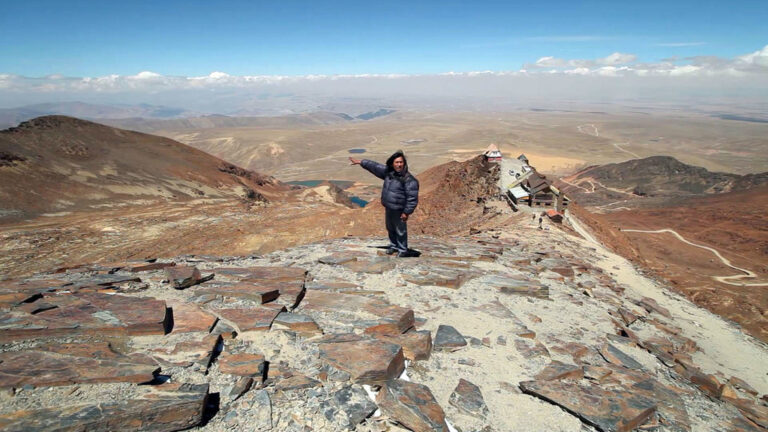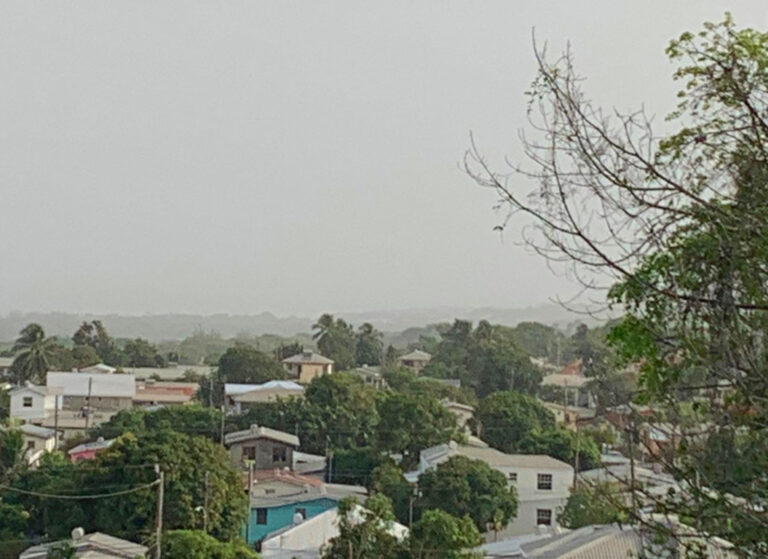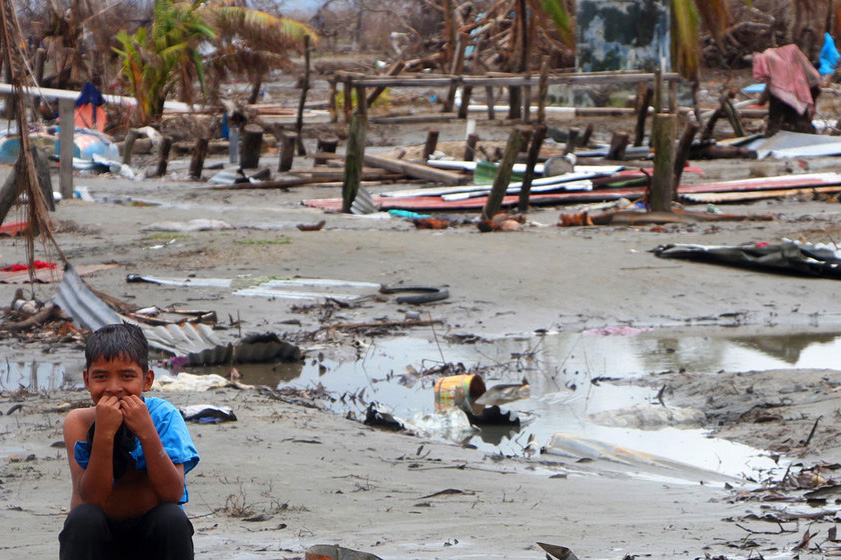Latin America will be one of the regions most affected by climate change
A report confirms that climate change will hit Latin America, where records of hurricanes will be broken, severe droughts will be suffered, sea levels will continue to rise and there will be more fires. Everything could get worse if the emission of greenhouse gases cannot be stopped urgently.
The future is already here: the worst droughts in 50 years in southern Amazonia and the record of hurricanes and floods in Central America during 2020 are the new normal that awaits Latin America, according to the new State Report released on Tuesday. of Climate in Latin America and the Caribbean 2020 of the World Meteorological Organization (WMO).
The research indicates that Latin America and the Caribbean is one of the regions of the world most affected by Climate Change and external meteorological phenomena that are causing serious damage to health, life, food, water, and energy and the socio-economic development of the region.
The report notes that climate-related events and their impacts claimed more than 312,000 lives in Latin America and the Caribbean and affected more than 277 million people between 1998 and 2020.
What will the future be like in the region?

Bolivia’s mountainous Chacaltaya region was once a ski resort, but the glaciers melted decades ago. Photo: Stephan Bachenheimer/World Bank
Latin America is projected as one of the regions of the world where the effects and impacts of climate change, such as heat waves, decreased crop yields, forest fires, the depletion of coral reefs and extreme events of the sea level, they will be more intense.
The report is forceful in ensuring that setting limits to global warming below 2.0 degrees Celsius, as dictated by the Paris Agreement, is vital to reduce risks in a region that already faces economic and social asymmetries for its development of sustainable way.
“The Latin American and Caribbean region faces and will continue to face serious socio-economic crises due to extreme hydro-meteorological events. In recent times this has been exacerbated by the impacts of the COVID-19 pandemic. Recovery after Coronavirus will be a great challenge. To ensure this recovery, it is essential to continue promoting Sustainable Development Goal 13, which indicates the adoption of urgent measures to combat climate change and its impacts ”, stressed Petteri Taalas, Secretary General of the World Meteorological Organization.
What extreme climate changes and impacts are taking place in Latin America?
The report is clear in pointing out that there are strong effects related to rising temperatures, changes in precipitation patterns and storms, as well as a marked retreat of glaciers.
The UN agency also launched a virtual map that collects the main conclusions, impacts and requirements for adaptation and resilience, including:
Temperatures
The report highlights that 2020 was one of the three warmest years in Central America and the Caribbean, and the second warmest year in South America, with 1.0 degrees Celsius, 0.8 and 0.6 above the 1981 period. -2010, respectively.
Rains
The widespread drought had a significant impact on shipping lanes, crop yields, and food production, leading to a worsening of food security in many areas.
In South America the impacts were extreme. The intense drought in southern Amazonia and the Pantanal region was the worst in the last 50 years.
Precipitation deficits are particularly serious for the Caribbean region, since several of its territories are on the world list of countries with the highest water stress.
A weak monsoon in North America and cooler-than-normal sea surface temperatures along the eastern Pacific, associated with La Niña, led to drought in Mexico.
Towards the end of the year, heavy rains caused landslides and flash floods in rural and urban areas of Central and South America.
Fires in the Amazon
2020 surpassed 2019 and became the most active fire year in southern Amazonia. The drought was a determining factor. The Amazon River basin, which stretches across nine South American countries and stores 10% of global carbon, has experienced increased deforestation in the past four years due to logging to create pasture for livestock and livestock. degradation caused by fires.
While still a net carbon sink, the Amazon is reeling and could become a carbon source if forest loss continues at the current rate.
The Latin American and Caribbean region contains approximately 57% of the world’s primary forests, storing approximately 104 gigatons of carbon and hosting between 40% and 50% of the world’s biodiversity and a third of all plant species.

Floods could be more constant in different parts of Latin America, especially Central America. Photo: Kelly Sikkema/Unsplash
Tropical cyclones
As drought affected much of Mexico and South America, 2020 brought an unprecedented record of 30 named storms in the Atlantic basin.
Usually in November the hurricane season is almost over. But this 2020 saw Category 4 hurricanes Eta and Iota make landfall in the same region just a week apart.
They followed nearly identical roads through Nicaragua and Honduras, affecting the same areas and thus exacerbating the impacts. These unprecedented hurricanes affected more than eight million people in Central America.
Guatemala, Honduras and Nicaragua were the most affected countries with more than 964,000 hectares of crops damaged.
Only in Honduras the damages to the Gross Domestic Product of these two hurricanes were calculated in more than 2000 million dollars.
Rising sea levels
Sea level in the region grows above the world average. With an average of 3.6 mm per year, between 1993-2020, the sea level in the Caribbean has risen at a rate higher than the world average, which was 3.3 mm per year.
In Latin America and the Caribbean, more than 27% of the population lives in coastal areas, and it is estimated that between 6 and 8% live in areas that have a high or very high risk of being affected by coastal hazards.
Ocean temperature
The sea surface temperature in the North Atlantic Ocean was significantly warmer than normal throughout the year.
In the Caribbean, 2020 was the year with the largest changes in ocean temperature ever recorded. Starting in May 2020, sea surface temperatures began to gradually cool down in the equatorial Pacific and La Niña developed. This, together with the increase in temperature in the Atlantic, contributed to a more active hurricane season than normal.
Glaciers
In the Andes of Chile and Argentina, glaciers have been retreating during the last decades. The loss of ice mass has accelerated since 2010, along with an increase in seasonal and annual temperatures and a significant reduction in rainfall in the region.

A cloud of dust from the Sahara darkens the skies of the Caribbean in 2020. Photo: WMO
Food and access to food
Extreme weather events affected more than eight million people in Central America, exacerbating food shortages in countries already crippled by economic crises, COVID-19 restrictions and conflict.
In Guatemala, for example, climatic conditions have contributed to the loss of close to 80% of the corn crop.
In Mexico, the municipality of Cerritos suffered a 50% drop in harvests due to drought. Sorghum, sunflower and corn were among the most affected crops.
Is adaptation and resilience possible in this region?
The report proposes that climate change must be understood in conjunction with the level of human intervention in the environment, such as uncontrolled urbanization, destruction of ecosystems, as well as its relationship with other associated risk factors such as poverty, inequality and corruption, among others.
“The death and devastation that resulted from Hurricanes Eta and Iota in Guatemala, Honduras, Nicaragua, and Costa Rica, and the intense drought and unusual fire season in the Pantanal region of Brazil, Bolivia, Paraguay, and Argentina, stand out once plus the need for regional and international cooperation because the dangers associated with hydrometeorological phenomena and climate do not respect borders ”, said the WMO Secretary General.
The UN agency points out in its report that the region requires:
- strengthen monitoring of climate threats
- strengthen your early warning systems
- early action plans to reduce disaster risk and its impacts
However, evidence shows that early warning systems are underdeveloped in the region, particularly in Central and South America.
The organization also mentioned that specific risk monitoring systems, such as the Agricultural Stress Index (ASIS) of the Food and Agriculture Organization of the United Nations (FAO), is an example of a useful tool that allows governments to issue alerts. early for specific sectors such as agriculture.
The report also suggests promoting the protection of mangroves as an exceptional resource for adaptation and mitigation to climate change, since this ecosystem has the capacity to store three to four times more carbon than most of the world’s forests, and provides other services such as coast stabilization, biodiversity conservation, among others.
However, despite these benefits, mangrove areas were reduced by about 20% in the first two decades of the 21st century.
Financing for adaptation

A diver monitors the state of the reefs in the Mexican Caribbean. Photo: Mario Chow/Healthy Reefs
In presenting the report, the executive secretary of the Economic Commission for Latin America and the Caribbean (ECLAC) pointed out that the report confirms the severity of the climate crisis in the region and shows the urgency of confronting it, urging the international community to prioritize financing adaptation measures.
“The global governance system has not been effective in mobilizing resources to developing countries. There is a shortage of financing for climate action, especially for adaptation. This aggravates the vulnerability of the countries, reducing the ability to finance their own actions, ”said Alicia Bárcena.
And he added that “this is a timely, necessary and pertinent report and should serve as the basis for public policy, for economic, sectoral and social planning.”
Report creation
The report was prepared through an interactive process that involved the participation of a multidisciplinary group of 40 experts, coordinated by the World Meteorological Organization.
The report’s findings are based on an assessment of the climate system using data from 1,700 weather stations in Mexico, Central America, and the Caribbean and gridded data for South America.
The report was released on August 17 along with the High Level Conference “Working Together for Hydrometeorological and Climate Resilience in Latin America and the Caribbean”.
Under the coordination of WMO, the United Nations Economic Commission for Latin America and the Caribbean (ECLAC) and the United Nations Office for Disaster Risk Reduction (UNDRR).
This report has been produced by Danilo Mora Díaz, UN Communications Officer in Costa Rica.
The original story was published by UN News
